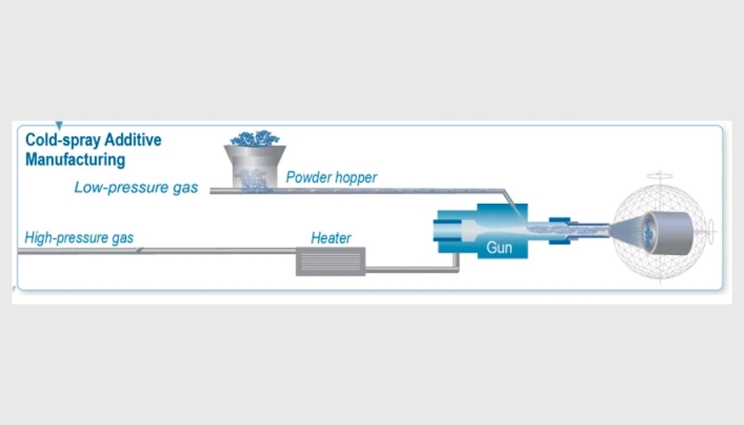Versatile cold spray for a greener economy
Permanent magnets form the backbone of clean energy technologies from direct-drive wind turbines to electric motors, and will form a key component of the upcoming transition to a green economy. There is significant interest in the application of additive manufacturing approaches to produce permanent magnets, with techniques such as laser powder-bed fusion and binder-jet printing finding success. However, manufacturing high-performance rare earth permanent magnets, such as Nd2Fe14B (neodymium, iron, and boron), remains challenging and costly due to machinability and supply issues.
Sintered Nd2Fe14B remains the gold standard for applications near room temperature, but material loss through swarfs (manufacturing debris) and breakages inflates the cost. Furthermore, the range of geometries that it is feasible to manufacture is limited by the production process, with sintered magnets requiring compaction and complex machining. Bonded magnets, wherein magnet powder is mixed with a polymer binder, overcome this issue, but at the cost of reduced performance caused by lower filling fraction.
To address the existing challenges in this field, researchers have studied a binder-free method for depositing Nd2Fe14B powders using a Versatile cold spray system (VCS), a 2020 R&D 100 award winning technology, from industry partner TTEC Thermoelectric Technologies. With this system, millimeter thick deposits can be fabricated in seconds on substrates such as glass or copper using a He or N (helium or nitrogen) carrier gas, allowing for design flexibility.
Overall, the experimental results show that well consolidated deposits can be achieved with a range of temperature and pressure conditions, along with excellent adhesion to the copper or glass substrates. The force of impact and heating of a portion of the particles, without a binder to function as a shock absorber, leads to decomposition of the desired Nd2Fe14B phase and formation of soft Fe, which reduces coercivity and degrades magnetic performance. This can be partially mitigated through careful choice of spray conditions, though further work is required to ensure that the fabricated parts retain their full functional properties and are thus suitable for a broad set of applications.
[A.A. Baker, R.C. Thuss, A.A. Maich, S.K. McCall, H.B. Radousky, Binder-Free Cold Spray Deposition of NdFeB Permanent Magnets, MRS Communications (2023), DOI: 10.1557/s43579-023-00382-x.]
–Physical and Life Sciences Communications Team








